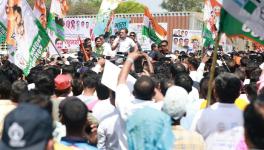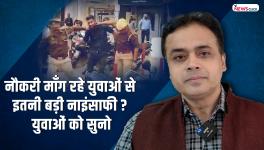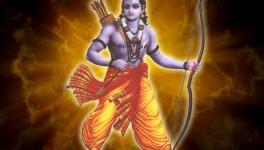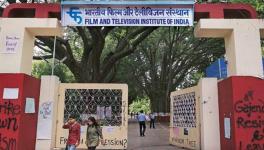Ramayan Targets 4G Generation in Second Coming as Soap Star

The rerun of the televised Hindu epic Ramayan by state-owned broadcaster Doordarshan concluded in May and smashed global viewership records. It hardly needed proof that this epic has hypnotised Indians for a long time, but the rerun surprised many by beating the 2019 finale of the “youth-friendly” and high-quality production quality of the Game of Thrones series.
Social media platforms in India were flooded with stories, tweets and memes around the Ramayan theme for weeks after the rerun. People prefixed their handles with “Ram bhakt” or “Kattar [hardcore] Hindu”. The faux antiquated language that characters in the serial spoke also surged in popularity. A Broadcasting Audience Research Council (Barc) survey recorded a 52% surge in viewership among the 2-14 years’ age group for Ramayana 2.0. This is a surprise, for the rerun is of the same Ramayana that was first aired in 1987, completely unchanged, no bells and whistles added for the supposedly tech-savvy generation.
They say movies, stories, songs and images have always been politicised and perhaps the Ramayan is no exception. A Cesare Borgia lookalike is said to have been the model for the most popular image of Jesus. The German movie, “Triumph of the Will”, was inducted into the Nazi propaganda machinery with chilling effect. The blockbuster film Uri is just one example of Indian cinema extolling state power.
Political Tool
But we must return to what Walter Benjamin said about the mechanical reproduction of art. Displacing art from its original context alienates a work from its aura or context. It is now up to a viewer or listener to interpret it, which they do in their own context. This is what has happened with Rama, the Hindu god and hero of the epic Ramayana. When shorn of lyrical, historical and literary contexts, Rama turns into a political tool that can polarise society.
This is what the televised Ramayan has done to the Hindu middle class since the late 1980s. We now have to see if the latest rerun will have a similar effect on today’s viewers—most of whom were born after the original “Ramayan era” of Indian television.
Ramayan 1.0:
The original Ramayan era began in 1987, which coincided with two other important events: the Supreme Court’s Shah Bano judgement and its political reversal, and the Ramjanmabhoomi dispute. Pre-existing and fresh religious polarisations got a pretext in Shah Bano, and the Vishwa Hindu Parishad raised its pitch for a temple dedicated to Rama at the “disputed” site. In this new phase of politics, religious passions were stoked until communalisation peaked in the nineties.
The remaining context of Ramayan 1.0 was supplied by technological changes. Televisions (colour picture tubes arrived in the late eighties) in homes were part of this change. Audiovisual media became a tool to circulate dominant ideas of the ruling class, creating a sociopolitical arrangement through official selection of content. This content was now displayed on vivid TV screens in homes, where viewers could be dominated by powerful signs, symbols and moving images without even being aware of it.
The television allowed an image, or video, of Rama to be created and widely circulated. Besides, Ramanand Sagar’s Ramayan was telecast across the country. Though only produced in Hindi, several dubbed versions are available. (There were also reruns in the mid-2000s, but they passed unnoticed.) Rama portrayed by Arun Govil was a baby-faced warrior-king who was projected as a common ancestor of Hindus. His vanvasa or exile became a narration of sacrifice, hardship and fixation on a primary goal: establishing a “just order”. The result was a textbook case of a detached and antiseptic maryada purushottam.
Still the idea of perfection personified was consumed by a religiously-polarised middle class, which needed to be distracted from the tumultuous upheavals of liberalisation. Television created a hyperreal Lord Rama for their consumption. The televised Rama either suffered smilingly in the woods or waged war against opponents, while the communal divide was solidified in the real world, chipping away the “Nehruvian” secular consensus.
The propagation of a Rama image changed politics drastically. This image has already patronised two generations of Indians, changing how they enact, conceive of and understand both politics and religion. Rama’s image crept outwards into politics and amalgamated a variety of elements into a single understanding. Be it Article 370, Triple Talaq, Babri masjid or holy cows, everything has been totalised under the “Hindutva” cupola in the name of Rama. This also concretised the grounds for the BJP’s rise, taking it from two seats in 1984 to 85 in 1989 and 303 in 2019.
Ramayan 2.0:
The latest rerun also hit the screens while the nation convulsed under one of its starkest communal polarisations. This time, the power to propagate communal propaganda traces its genesis in the “Jio phenomenon”: the proliferation of 4G internet connections at negligible cost to “every” individual. Mass replication of information on a targeted basis and on a greater scale, allowed people to be polarised easily along existing and new fault-lines.
Communalisation gained momentum alongside, with every step taken by the Centre, from banning cow slaughter to criminalising triple talaq, to abrogating Articles 35A and 370 of the Constitution. The icing was the Supreme Court judgement on the Ramjanmabhoomi dispute, which the BJP adroitly interpreted as its own victory.
This process has created an insecurity among the minority Muslim communities, which climaxed around the Citizenship Amendment Act to spark nationwide protests. The Shaheen Bagh model of protest demonstrations was replicated throughout the country, creating a legitimacy crisis for the government.
Just before the Delhi Assembly election, there were attempts to develop a counter-narrative to these protests through messaging apps and social media. They spread misinformation about the protests, such as the charge that cash was being distributed and biryani served at the protests to magnetize people’s participation. This propaganda machine was complemented by doctored videos and speeches—even a deep fake—about the supposed violence. So while the counter-narrative to the protests deployed high-end technologies and media, the overarching narrative of Hindu “pride” and superiority came from content developed in the 1980s using comparatively primitive tools and archaic production quality.
The protesters and those opposed to the Act were painted as infiltrators, “gaddar” (traitor) and terrorists, presumably to be shot at once they were “identified by the clothes they wear”. It assured a section of the Hindus that there is a “war” against them and their identity by “infiltrators” and “outsiders”. The feeling of inferiority was spread among the majority, and at every counter-protest by the Hindu right, there were calls to unite in the name of Rama. Within weeks of this tumult the Ramayan was rerun, convincing viewers they are on righteous path (like their ancestor, Rama).
Hyper Reality
What is going on is a process of mass reproduction of forged realities, a collapse of the separation between the real and the imaginary. This has blocked the individual conscience, which otherwise craves for a more objective version of reality. Umberto Eco, who taught semiotics at the University of Bologna, has written in his “Travels Through Hyper Realities” about things that appear to come very close to how they really are. For example, in Disneyland or at game parlours, simulated realities seem to appear before us (with help from digital technologies). Once the distinction between real and imaginary is eliminated, the desire to consume the imaginary as a form of the real escalates: consumption whets the appetite for the hyperreal.
Broadcasting the Ramayan is therefore no benign activity. That is why the Minister of Railways compared a railway project in Tamil Nadu with Rama’s journey to “Lanka”. Even the recent Indo-China border dispute is being dubbed by some as a war between Rama and the Dragon. Ramayan reruns will detach individuals from rational and scientific understanding of creative expression and send them into a world where anything goes in the name of epics or mythologies. Once again, opium is being doled to the masses.
The author is a student of political science at Delhi University. The views are personal.
Get the latest reports & analysis with people's perspective on Protests, movements & deep analytical videos, discussions of the current affairs in your Telegram app. Subscribe to NewsClick's Telegram channel & get Real-Time updates on stories, as they get published on our website.
























